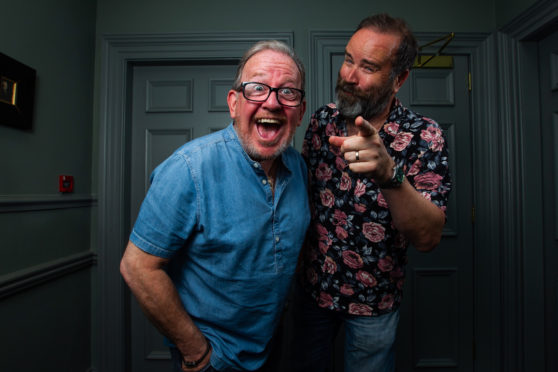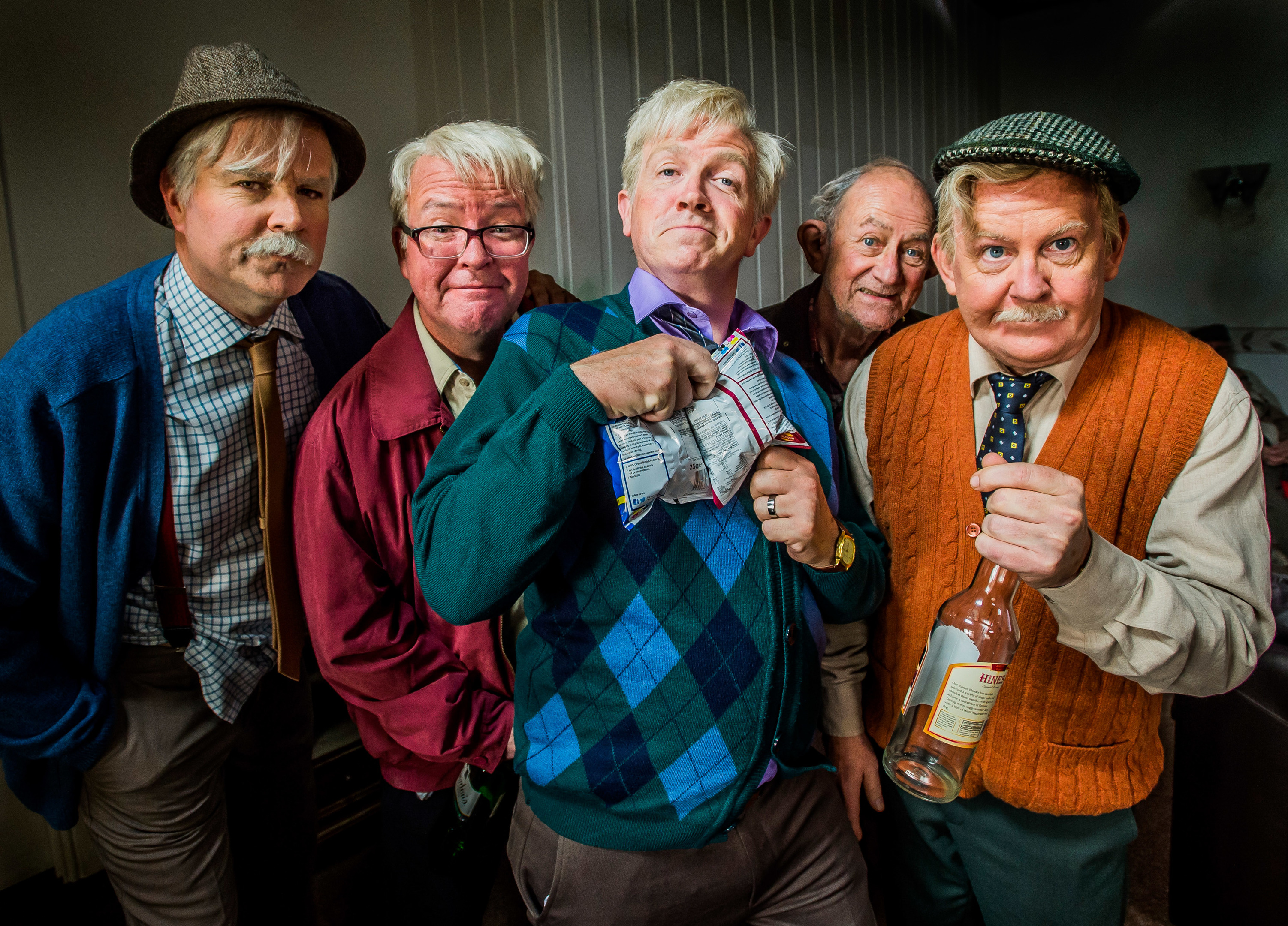
After 22 years, 62 episodes and three live shows, Scotland’s favourite pensioners are finally ready to retire.
Fifteen shows at the Hydro, beginning next month, will end the Still Game story once and for all but Ford Kiernan and Greg Hemphill have no thoughts of following their iconic pensioners into the sunset.
As they prepare to don the bunnets and blazers of Jack and Victor one last time, the duo insist they will work together again – but it will be nothing like the Craiglang gang.
“The danger in jumping into something too quickly is fans of the show say it’s not as funny as Still Game or it’s not quite Still Game,” said Ford, 57. “Well, of course it’s not, it’s different.
“Someone else asked us if we’d be able to achieve this again, taking a show to stadiums.
“Probably not, but we don’t really want to, either.
“We’ve already done that – created two characters, built it up, played a stadium – so how could you do it twice? I don’t know anyone who’s done it twice.”
The talented pair now known for their keen observation of life’s natural humour won’t rush into a new project.
Greg, 49, said: “Ford and I have talked about this often, the idea of diving into something for the sake of it.
“When we started Jack and Victor, the reason we knew we could write it was because it was almost like they spoke to us and through us. We could see all the material we were generating.
“It’s putting the cart before the horse to say we’re going to do this or that next, because the idea has to be right and when it is, the writing becomes easier and fun.”
From performing in front of a handful of people at the Fringe in 1997 to putting an incredible 500,000 bums on seats in the SSE Hydro across 51 shows, the theatre has bookended the sitcom’s stunning TV success.
“We always thought theatre would be the natural life for Still Game, and whenever it came to an end it would be in the theatre,” said Ford. “That’s the way it’s panned out, it’s just that TV came in the middle of it.”
Realising other people enjoyed the characters as much as they did are Ford and Greg’s fondest memories of Still Game. “I remember one of the first Fringe shows, only about 30 or 40 people in the audience, where we did this segment about biscuits,” said Greg.
“Jack asks Victor if I have any and I say no, but a couple of minutes later, I come in hiding some behind my cardigan.
“I remember the laughter it got and recall thinking we might be on to something.”
Ford added: “The gradual realisation that Scotland had taken to us was extremely pleasing, that slow-drip of finding out everyone was into it.
“In the beginning you’re not really sure, you’re relying on feedback from taxi drivers and people on the street.”
Coming up with the characters couldn’t have come at a more opportune time for Ford and Greg, following the cancellation of BBC sketch show Pulp Video after just one series.
“We’d come off a tough time with the TV show not being recommissioned. Ford and I sat in a room one summer and wrote Still Game and did it at the Fringe,” Greg recalled. “To hear the laughter was very gratifying, even in tiny numbers.
“Fast forward all these years and the audience numbers may be different but the feelings are the same.”
Still Game: The Final Farewell takes place around the time of the final television episode, which saw Jack and Victor ascend Ben Lomond.
In the episode’s closing scenes, a montage showed each of the main characters fading out of frame, before a much older Boaby served a new set of regulars in The Clansman.
Ford said: “It offers up an explanation as to what happened that day, in the end. We’ve been inundated with people asking, so there was still a bit of closure needed for the characters, and that’s what we’re bringing.”
“The story starts with Old Boaby and all the things that happen around that time,” Greg said. “We’re not doing a prequel or some alternative universe – it’s complementary to the TV show, but it’s its own thing as well.”
Ford and Greg admit they’ll miss the characters, but want to enjoy playing their own ages for a while.
“We’ll maybe miss the conduit they provide for talking as them,” Ford added.
“But we need to take some time out, because we missed out on our 30s by playing old men.
“If you look at showbiz, we’re not even in the senior league. Start further up the food chain, people like Harry Enfield, they’re all in their 60s. People are under the illusion, because we played pensioners, that we’re older.
“There are some things we want to try but we’re entitled to a couple of minutes off.”
Greg laughed: “Aye, we’re going to go and buy two sports cars and have a midlife crisis. I love taking the car out and feeling the wind in my hairs!”
Still Game: The Final Farewell, SSE Hydro, Sept 27-Oct 13

Enjoy the convenience of having The Sunday Post delivered as a digital ePaper straight to your smartphone, tablet or computer.
Subscribe for only £5.49 a month and enjoy all the benefits of the printed paper as a digital replica.
Subscribe © BBC/Alan Peebles
© BBC/Alan Peebles